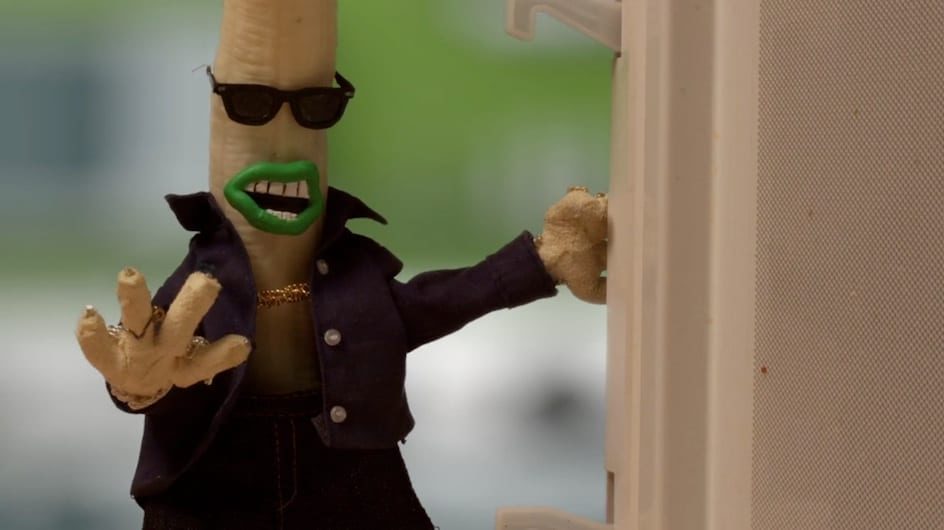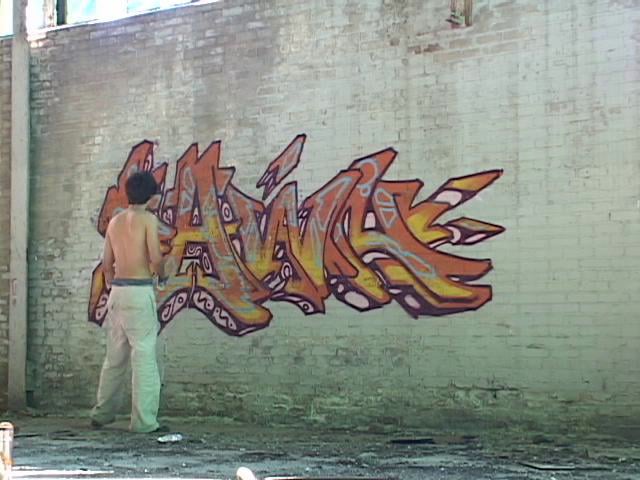How would you describe your childhood please? And when did you first become aware of wanting to tell visual stories?
My dad is a filmmaker who ran his studio out of the basement so I have literally been making or working on movies since I was five years old. I had a really lucky childhood, I was surrounded by artsy stuff and video equipment and my parents always supported creative activities. I never made the decision to pursue a visual storytelling career – I just never imagined doing anything else.
You’ve recently graduated from CalArts and your graduation film Butter Ya Self has picked up some prized accolades – including being signed to SuperGoober in London. Are you incidentally signed anywhere else?
I am not signed to any other production companies but I am talking to some literary agencies that are helping me put together pitches for TV shows and stuff like that.
Please tell us about the process of making Butter Ya Self…Did you have to fulfill a brief or did you have complete creative freedom?
Both, I had complete creative freedom but I also had to present my work and ideas as I went along. That’s how they do it at CalArts and I really like that system. It would take me a really long time to explain the whole process but I can give you some overall ideas of how I work. I like to start working on things before I have the idea fully fleshed out – so for example I made the banana peel puppet before I even knew that this project was going to be a music video.
From there everything falls into place organically. Every element of the project was constantly evolving right up until the end. I had animated both of the verses before I had even written or recorded the hook. This approach is so much fun and it’s a privilege to be able to work like this, in the real world you have to flesh out your whole project before you start working on it. That’s why going to art school is the best, it’s one of the few opportunities you have in life to work on something entirely on your own terms.
How did the idea for the narrative come about – from real life or were you inspired by something you viewed?
I wish it came from real life but unfortunately I never made it as a rapper. It came from really loving and studying contemporary rappers and animators. In my eyes this project is my own version of a lot of things that already exist. There have already been a lot of rap songs made about being rich and famous and there have been a lot of short stop motion films about personified foods. So yes – I am more inspired by things that other people make than my own life.
How did you make the decision to use the materials you used? Did you experiment endlessly with bananas and were there any other potential fruits or objects that didn’t make the grade?
Yup, Sweet Cream (the stick of butter) was originally going to be a sausage named Phatty Acid. And yes, there was endless experimentation involved. Fabrication is a lot like science, you have to take notes and keep records of all your experiments. Its a weird part of the process because even experts don’t have the answers, you are always trying out new materials and inventing new ways to do things.
Did you make the models as well as shoot the stop frame yourself? It must have taken forever – did you have another life or was your life pretty much dedicated to making this film for some time?
I always try and turn things into a collaboration when I can, but for the most part I did everything myself. I managed to live a balanced life for the first 75% of production which is better than I’ve ever done. The last stretch was insane though – I was spending every hour of every day working on it. That’s a terrible way to live your life, I’m hoping that next time I will maintain a balanced lifestyle the whole way through.
Your characters, whether it’s a banana or pound of butter, are imbued with a strong emotional language in their movements. Was it simply life situations you have drawn on to express body language?
Good animation always imbues characters with strong emotional body language – so thanks!! I have my own formula that I follow for animation and it involves a lot of studying and analyzing movement. I always watch reference and I always act out the movements myself – sometimes I even video tape myself doing things and watch that. For this project that process was a lot of fun because it was an excuse to rap in the mirror (something I do anyways) and to watch tons of rap videos (also something I do anyways). I always say that all the work of animation happens before you even touch your puppets, it’s in your understanding of human movement and in your understanding of your characters.
What lessons did you learn from making Epidemic that you brought to your later film?
The biggest thing I learned was that my unrestrained creative sensibility does not have mass appeal. I intended that film to do really well in festivals and online but it didn’t and that was a much needed wake up call for me. I have a weird sense of humor that a lot of people find boring… My goal after The Epidemic was to make a film that expressed my sense of humor and my sense of timing but was packaged in a way that made it commercially viable. Put simply – I learned that I need to make everything shorter.
The music and sound is very effective in your films. Do you collaborate with an audio recordist or do you make your own soundtracks?
I do all my own sound. And thank you – it’s really hard and painful to do sound, especially mixing rap music. I am really proud and shocked that I managed to make a song that sounds so legit – and I learned everything from tutorials on Youtube – which I think is awesome.
What is your favourite part of the animation / film making process?
The feeling you get when you are extremely focused on animating is pretty euphoric. Something weird happens when you spend 14 consecutive hours focused on just a few seconds. It kind of feels like time has stopped for the entire world and you’re able to live in these fractions of a second forever. I enjoy this sensation.
Love the graffiti film – so what was your real experience in the factory that led to this?!
Ha! Thanks! I was a graffiti writer for a long time, that was a real experience. I totally thought I was going to kill someone with a metal pipe in that moment, it turned out that the voices were coming from other graffiti writers who just came in and acted really tough and didn’t talk to me – I don’t miss that culture at all. I got into a few really scary experiences when I was doing graffiti. I’ve fallen off a roof, been arrested, been mugged, almost been killed by a train, etc. People who stay graffiti writers past the age of twenty are crazy, at some point in life spending your friday nights hiding under a dumpster from the cops shouldn’t appeal to you anymore. That’s why I switched to producing rap beats, it’s just as much fun with 0% of the risk.
Anything else you’d like to share?
Dear world: hire me!














